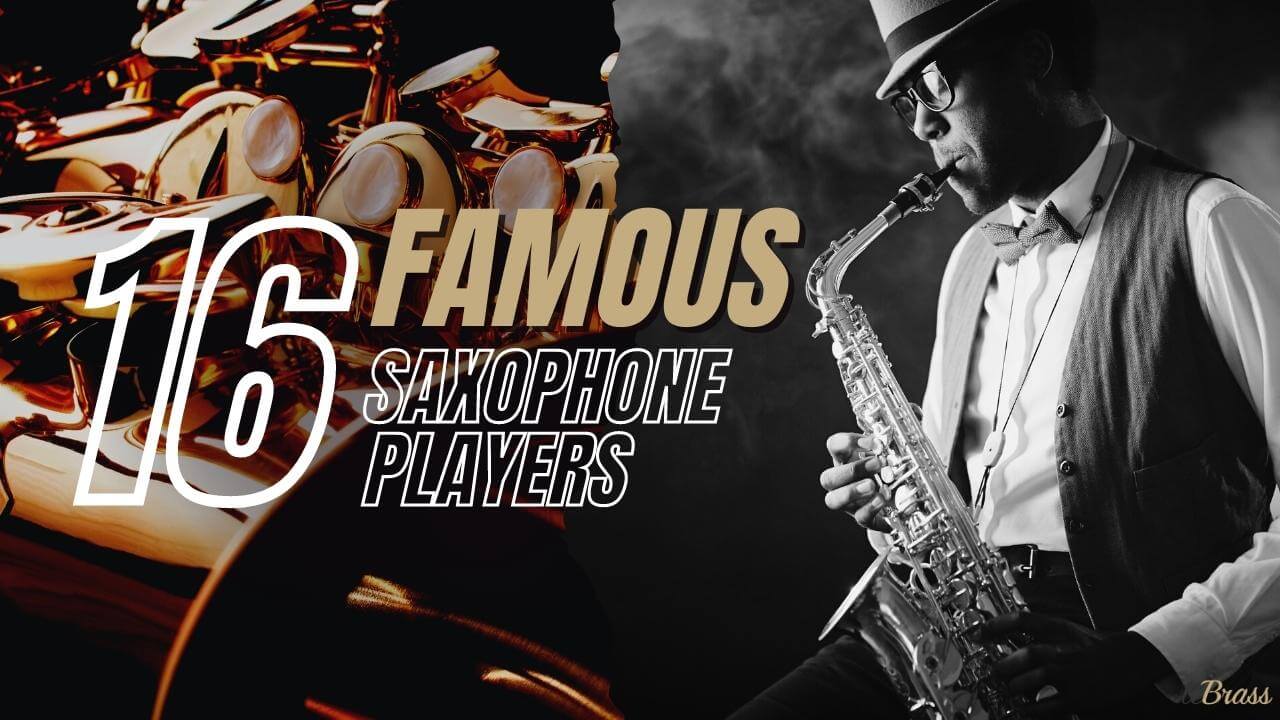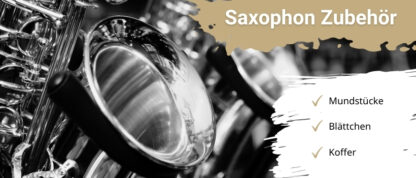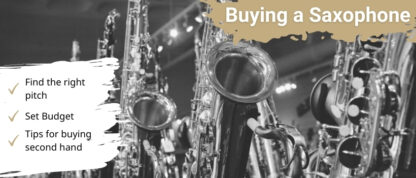
Saxophone players – My personal favorites. As a passionate musician and saxophone player, it is my honor to present some of the most well-known and influential saxophone players in the world. From classic jazz to modern fusion genres, these artists have established the saxophone as one of the most versatile instruments in music history.
Now new: All saxophone players in a clear comparison and the most famous musicians and music genres by saxophone type.
The most famous saxophone players in the world
John Coltrane (1926-1967) – The titan of modern jazz
- ⭐ „A Love Supreme“
- 🎵 Free Jazz, Hard Bop
- 🎷 Tenor, Sopran
John Coltrane is considered one of the greatest saxophone players in jazz history. His innovative playing and impressive technical skills made him a titan of modern jazz. Coltrane’s style influenced a whole generation of jazz saxophonists, especially in the field of avant-garde jazz. His most famous recordings are “Giant Steps” and “A Love Supreme,” which are among the most important albums in jazz. Coltrane studied Indian music and spiritual teachings intensively and let these influences inspire him to new creative heights.
Most famous works of John Coltrane:
- “Giant Steps” (1960) – Complex improvisation, jazz standard.
- “My Favorite Things” (1961) – Broadway music, jazz interpretation.
- “A Love Supreme” (1965) – Spiritual, jazz classic.
- “Naima” (1960) – Ballad, jazz classic.
- “Blue Train” (1957) – Hard Bop, jazz standard.
- “Acknowledgement” (1965) – Part of “A Love Supreme”.
- “Impressions” (1963) – Live recording, jazz standard.
- “Alabama” (1963) – After a racist bombing.
- “Equinox” (1964) – Slow ballad, jazz classic.
- “Central Park West” (1964) – Melancholic ballad.
You probably didn’t know this: Coltrane had a fondness for mathematics and geometry and tried to integrate these concepts into his music. His most famous work, Giant Steps, is an example of his mathematical approach to composing music.
Charlie Parker (1920-1955) – The inventor of the bebop
- ⭐ „Ornithology“
- 🎵 Bebop
- 🎷 Alt
Charlie Parker, also known as “Bird,” is often considered the inventor of the bebop style. His fast and virtuosic playing on the saxophone has influenced and inspired many musicians. Parker was also known for his unique and creative improvisational style. His most famous album is “Charlie Parker with Strings”. Parker was known for his excessive lifestyle and died at the age of only 34 as a result of his drug use.
Most famous works of Charlie Parker:
- “Ornithology” – well known piece, based on “How High the Moon”
- “Scrapple from the Apple” – Parker composition, often covered
- “Billie’s Bounce” – Parker composition, one of his most famous pieces
- “Now’s the Time” – well-known piece, often covered
- “Moose the Mooche” – fast, driving piece from Parker
- “Donna Lee” – fast piece, often played
- “Parker’s Mood” – slow blues with melancholic atmosphere
- “Confirmation” – well-known piece, often covered
- “Au Privave” – fast piece, often played
- “Yardbird Suite” – well-known piece, includes Parker’s nickname “Yardbird”
Stunningly, during a performance in Los Angeles in 1946, Parker’s little chick, which he had brought on stage with him, died. The incident triggered a strong emotional reaction in Parker and inspired him to write his play “Parker’s Mood”.
Stan Getz (1927-1991) – The “sound” of cool jazz
- ⭐ „The Girl from Ipanema“
- 🎵 Cool Jazz, Bossa Nova
- 🎷 Tenor
Stan Getz became known for his unique sound on the saxophone and was one of the most prominent representatives of cool jazz. He often played with Latin American rhythms and recorded the famous album “Getz/Gilberto” in the 1960s, which included the song “The Girl from Ipanema” and brought him international success.
Most famous works of Stan Getz:
- “The Girl from Ipanema” (1964) – Bossa nova song recorded with João Gilberto and Astrud Gilberto.
- “Desafinado” (1962) – Bossa nova song recorded with João Gilberto.
- “Europa” (1976) – Jazz fusion piece recorded with Eddie Gomez.
- “Focus” (1961) – Album with unusual instrumentation (solo violin, flute), recorded with Eddie Sauter.
- “Round Midnight” (1989) – Live album recorded with Kenny Barron.
- “Captain Marvel” (1972) – Fusion album recorded with Chick Corea.
- “Moonlight in Vermont” (1956) – Album recorded with Johnny Smith, contains well-known interpretation of title track.
- “Stan Getz Plays” (1952) – Early album as a soloist with various lineups.
- “Sweet Rain” (1967) – Album recorded with Claus Ogerman, contains complex pieces with orchestral accompaniment.
- “Jazz Samba” (1962) – Album recorded with Charlie Byrd, popularized bossa nova music in the USA.
Did you know. Getz was a perfectionist and often recorded dozens of takes to get the perfect solo. He also had a passionate love of Brazilian music and was instrumental in popularizing bossa nova in the United States. He was also an avid photographer and took many pictures during his tours.
Sonny Rollins (born 1930) – The master of the tenor saxophone
- ⭐ „St. Thomas“
- 🎵 Hard Bop, Free Jazz
- 🎷 Tenor
Sonny Rollins is one of the last living saxophone legends and still plays concerts regularly. His playing style is full of energy and improvisation and has influenced many saxophonists. Among his best-known works are “St. Thomas” and “Oleo.” Rollins has played on a variety of saxophones, including a Selmer Mark VI and a Grafton saxophone.
Most famous works of Sonny Rollins:
- “St. Thomas” (1956) – Caribbean inspired jazz piece.
- “Oleo” (1954) – Jazz standard with Miles Davis.
- “Saxophone Colossus” (1956) – Album with “St. Thomas”, jazz classic.
- “Doxy” (1957) – Well-known jazz standard.
- “Tenor Madness” (1956) – Album with John Coltrane, contains “Tenor Madness”.
- “Autumn Nocturne” (1957) – Ballad from Way Out West.
- “Sonny Rollins Volume 2” (1957) – Album mit “Why Don’t I” und “Decision”.
- “Freedom Suite” (1958) – Album with social commentary and improvisational freedom.
- “The Bridge” (1962) – Album with “God Bless the Child”.
- “Way Out West” (1957) – Album with “I’m an Old Cowhand”.
Did you know? During his career, Rollins twice withdrew to focus on his music and spirituality. Both times, he spent hours playing the saxophone on the Brooklyn Bridge, honing his technique and sound.
Kenny G (born 1956) – The most successful commercial saxophone player
- ⭐ „Songbird“
- 🎵 Smooth Jazz
- 🎷 Sopran
Kenny G is one of the most successful commercial saxophonists of all time. He is known for his smooth and accessible sound, which enjoyed great popularity in the 1980s. His most famous album is “Breathless”, which was released in 1992 and sold more than 12 million copies.
Most famous works of Kenny G:
- “Songbird” (1987) – Smooth Jazz, Saxophone ballad.
- “Forever in Love” (1992) – Romantic, Smooth Jazz.
- “Going Home” (1992) – Instrumental adaptation.
- “Silhouette” (1988) – Groovy, saxophone ballad.
- “The Moment” (1996) – Relaxing, saxophone ballad.
- “Havana” (1997) – Latino jazz, saxophone.
- “Sentimental” (1992) – Emotional, saxophone ballad.
- “Don’t Make Me Wait for Love” (1986) – R&B influences, saxophone.
- “By the Time This Night Is Over” (1997) – Pop ballad, vocals by Peabo Bryson.
- “The Way You Move” (2004) – Cooperation with Earth, Wind & Fire.
I didn’t know this either: Kenny G holds the Guinness World Record for the longest note on a saxophone, which he set in 1997 with a breath of 45 minutes and 47 seconds.
Yusef Lateef (1920-2013) – The world musician
- ⭐ „Love Theme from Spartacus“
- 🎵 Jazz
- 🎷 Tenor
Yusef Lateef was a saxophonist who incorporated many different styles into his music, including jazz, blues, world music and classical music. He was also known for his skills on the flute and oboe. Lateef was a pioneer of ethnic jazz and recorded albums that included influences from Africa, Asia and the Middle East.
Most famous works of Yusef Lateef:
- “Love Theme from Spartacus” (1961) – Film score, jazz ballad.
- “Eastern Sounds” (1961) – Eastern music influences.
- “Morning” (1961) – Gentle, meditative, oriental.
- “The Plum Blossom” (1961) – Traditional Japanese music.
- “Chang, Chang, Chang” (1957) – Uptempo, with Latin American influences.
- “The Golden Flute” (1966) – World music, exotic.
- “Yusef Lateef’s Little Symphony” (1963) – Classical music, jazz.
- “Bamboo Flute Blues” (1962) – Blues, with exotic instruments.
- “Nubian Lady” (1971) – Funky, R&B-like.
- “The Three Faces of Balal” (1964) – Fusion, with African influences.
Should also be said, Lateef was a multi-instrumentalist, playing not only saxophone, but also flute, oboe, clarinet and various other instruments. He was also an avid student of music theory and studied a variety of musical traditions from around the world.
Just a little excus in between: As a passionate musician, I can tell you that the saxophone is a very versatile instrument that is used in many different genres of music. There are several different types of saxophones, each with its own timbre and playing style. Here are some of the most common types of saxophones and what genres of music and famous saxophonists play them:
Soprano Saxophone in Jazz: A History from John Coltrane to Kenny G
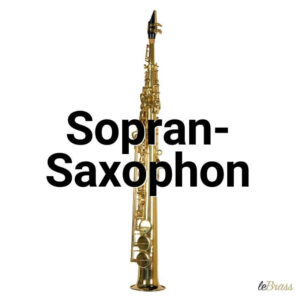
The soprano saxophone is the smallest and highest of the saxophone family. It is tuned in Bb and has a characteristic shrill sound. The soprano saxophone is very popular in jazz and classical music. It has a range from Bb3 to F6.
Well-known saxophone players who play the soprano saxophone include John Coltrane, Wayne Shorter and Kenny G.
The Alto Saxophone: A Versatile Instrument for Jazz, Pop and Rock
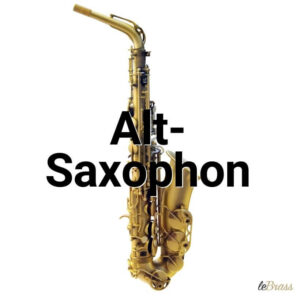
The alto saxophone is the most commonly used saxophone. It is tuned in Eb and has a range from Bb3 to F6. The alto saxophone is widely used in jazz, rock, pop and classical music. It has a warm, round sound and can be used both in an ensemble and as a solo instrument.
Well-known saxophone players who play the alto saxophone include Charlie Parker, Cannonball Adderley and David Sanborn.
The tenor saxophone: a trademark of jazz

The tenor saxophone is larger than the alto saxophone and has a deeper tone. It is tuned in Bb and has a range from Bb2 to F5. The tenor saxophone is also widely used in jazz, rock, pop and classical music and is often used as a solo instrument. It has a fuller, rounder sound than the alto saxophone.
Well-known tenor saxophonists include Sonny Rollins, Stan Getz and Michael Brecker.
The baritone saxophone: the deep and powerful sound
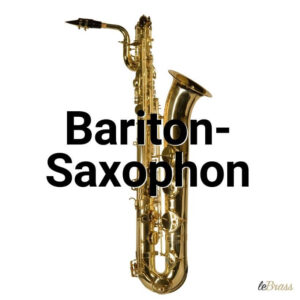
The baritone saxophone is the largest and deepest of the saxophone family. It is tuned in Eb and has a range from Bb2 to F5. The baritone saxophone is widely used in jazz and classical music and is often used in wind orchestras. It has a deep, powerful sound and can also be used as a bass instrument.
Famous baritone saxophone players include Gerry Mulligan, Pepper Adams and Ronnie Cuber.
Rare saxophone species
There are also several other types of saxophones, such as the bass saxophone, the contrabass saxophone, and the sopranino saxophone, but they are used less frequently.
Other famous saxophone players
Dexter Gordon (1923-1990) – The tenor saxophonist of bebop
- ⭐ „Round Midnight“
- 🎵 Jazz
- 🎷 Tenor
Dexter Gordon was a leading exponent of bebop and a master on the tenor saxophone. His melodic and swinging style was an important influence on many musicians. Gordon played with many famous jazz musicians such as Dizzy Gillespie and Bud Powell. His most famous album is “Go!”, released in 1962.
Most famous works of Dexter Gordon:
- “Stablemates” (1965) – Hard Bop Classics.
- “Round Midnight” (1986) – Film score, ballad.
- “Cheesecake” (1962) – Up-tempo, hard bop.
- “Body and Soul” (1967) – Jazz standard, ballad.
- “Darn That Dream” (1962) – Jazz standard, ballad.
- “Tangerine” (1972) – Up-tempo, Latin jazz.
- “Fenja” (1972) – Up-tempo, jazz-rock.
- “A Night in Tunisia” (1977) – Jazz standard, up-tempo.
- “Three O’Clock in the Morning” (1962) – Jazz ballad, saxophone.
This was also news to me: Gordon was one of the first African-American saxophonists to have success in Europe. During his time in Europe, he performed regularly in clubs and appeared in films.
Wayne Shorter (born 1933) – The composer of jazz
- ⭐ „Footprints“
- 🎵 Jazz
- 🎷 Tenor
Wayne Shorter is a saxophonist, composer and bandleader known for his innovative and cross-stylistic approach. Shorter played with Miles Davis’ famous second quintet and recorded many successful albums, including “Speak No Evil” and “JuJu.” He has also collaborated with many other well-known musicians and bands, and has written some of the best-known jazz standards.
Most famous works of Wayne Shorter:
- “Footprints” (1966) – A captivating jazz standard featuring Shorter’s masterful saxophone performance and showcasing his innovative approach to composition.
- “Speak No Evil” (1964) – A quintessential hard bop track, displaying a seamless blend of rhythmic intensity and melodic ingenuity.
- “Infant Eyes” (1965) – A poignant and tender ballad that has become a jazz classic, evoking deep emotions through its gentle melodies.
- “JuJu” (1964) – A spirited, up-tempo Afro-Jazz piece that highlights Shorter’s ability to fuse traditional African rhythms with modern jazz sensibilities.
- “E.S.P.” (1965) – A groundbreaking fusion track that showcases Shorter’s skillful saxophone playing and his unique ability to merge different musical genres.
- “Adam’s Apple” (1967) – A vibrant jazz-funk number featuring Shorter’s energetic saxophone and infectious grooves that will have your head nodding.
- “Nefertiti” (1967) – A mesmerizing modal jazz composition, displaying Shorter’s expertise in creating hypnotic and evocative soundscapes.
- “Black Nile” (1964) – A dynamic up-tempo hard bop piece that demonstrates Shorter’s exceptional talent for crafting memorable melodies and driving rhythms.
- “Angola” (1970) – A funky, saxophone-driven track that highlights Shorter’s ability to infuse his compositions with a sense of groove and soulfulness.
- “The All Seeing Eye” (1966) – An avant-garde tour de force, featuring Shorter’s experimental saxophone techniques and pushing the boundaries of jazz expression.
Did you know? Shorter was a member of the jazz band Weather Report and also worked with other well-known musicians such as Miles Davis and Herbie Hancock. He is also an avid science fiction fan and has based some of his compositions on science fiction themes.
Julian “Cannonball” Adderley (1928-1975) – The Hard Bop Master
- ⭐ „Mercy, Mercy, Mercy“
- 🎵 Jazz
- 🎷 Alt
Julian “Cannonball” Adderley was a well-known exponent of hard bop and a master on the alto and soprano saxophones. He played with Miles Davis and recorded many successful albums, including “Somethin’ Else” and “Mercy, Mercy, Mercy!”. Adderley had a distinctive sound and unparalleled technique on the saxophone.
Most famous works of Julian “Cannonball” Adderley:
- “Mercy, Mercy, Mercy” (1966) – Funky soul jazz tune, highlighting Adderley’s unique fusion of styles and expressive saxophone.
- “Autumn Leaves” (1958) – Classic jazz standard, featuring Adderley’s skillful saxophone interpretation and memorable phrasing.
- “Work Song” (1960) – Engaging hard bop composition, showcasing Adderley’s rhythmic saxophone playing and storytelling abilities.
- “Somethin’ Else” (1958) – Enduring jazz classic, demonstrating Adderley’s melodic prowess and soulful saxophone technique.
- “Jive Samba” (1962) – Up-tempo Latin jazz track, exhibiting Adderley’s ability to merge lively rhythms with his signature sax style.
- “Nancy (With the Laughing Face)” (1961) – Saxophone-driven ballad, displaying Adderley’s emotive and sensitive playing.
- “One for Daddy-O” (1958) – Hard bop piece, highlighting Adderley’s dynamic saxophone performance and compositional mastery.
- “Unit 7” (1962) – Up-tempo soul jazz, featuring Adderley’s infectious energy and groove-oriented approach.
- “I Remember You” (1961) – Nostalgic ballad, revealing Adderley’s introspective and tender saxophone sound.
- “Sack o’ Woe” (1960) – Hard bop track, showcasing Adderley’s integration of complex rhythms and virtuosic saxophone skills.
You might also be interested in this: Adderley actually studied education and worked as a teacher before deciding to pursue a career as a saxophonist. He was also a close friend of Miles Davis and performed regularly with him.
Pharoah Sanders (born 1940) – The spiritual jazz saxophone player
- ⭐ „The Creator Has a Master Plan“
- 🎵 Avantgarde-Jazz
- 🎷 Tenor
Pharoah Sanders is a saxophonist known for his unique and spiritual style. He played with John Coltrane and later developed his own style, which is a blend of jazz, free jazz, world music and spiritual music. Sanders is also known for his collaboration with the Sun Ra Arkestra and his recordings on Impulse! Records.
- “The Creator Has a Master Plan” (1969) – Spiritual avant-garde jazz piece, reflecting Sanders’ visionary approach to composition.
- “Kazuko” (1980) – Unique fusion of jazz and world music elements, showcasing Sanders’ genre-blending abilities.
- “You’ve Got to Have Freedom” (1980) – Upbeat jazz-funk track, highlighting Sanders’ talent for combining groove and improvisation.
- “Love Is Everywhere” (1974) – Jazz-funk composition, demonstrating Sanders’ skill in crafting infectious melodies and rhythms.
- “Astral Traveling” (1971) – Jazz-fusion piece featuring Sanders’ evocative saxophone and innovative harmonic explorations.
- “Harvest Time” (1990) – Engaging Afro-Cuban jazz track, exemplifying Sanders’ ability to incorporate diverse musical influences.
- “Thembi” (1971) – Creative jazz-fusion work, displaying Sanders’ experimental approach and unique soundscapes.
- “Upper Egypt & Lower Egypt” (1969) – Intense free jazz composition, showcasing Sanders’ powerful saxophone playing and avant-garde sensibilities.
- “Village of the Pharoahs” (1973) – Jazz-fusion piece with distinctive saxophone performance, highlighting Sanders’ inventive melodic concepts.
- “The Gathering” (1994) – Expressive free jazz track, featuring Sanders’ masterful saxophone improvisations and boundary-pushing ideas.
What’s unique to him is that Sanders has also incorporated vocal and percussion instruments into his music, creating a unique soundscape.
Grover Washington Jr. (1943-1999) – The King of Smooth Jazz
- ⭐ „Mr. Magic“
- 🎵 Smooth Jazz
- 🎷 Tenor
Grover Washington Jr. was a successful saxophonist who coined the smooth jazz style. He also played jazz-funk and soul-jazz and recorded many successful albums, including “Winelight” and “Mister Magic”. Washington had a smooth and accessible sound that helped him achieve commercial success.
Most famous works of Grover Washington Jr.:
- “Mr. Magic” (1974) – Smooth jazz piece featuring Washington’s soulful saxophone and signature melodic approach.
- “Just the Two of Us” (1981) – R&B track with Bill Withers’ iconic vocals, complemented by Washington’s expressive saxophone.
- “Winelight” (1980) – Smooth jazz composition showcasing Washington’s distinct saxophone tone and captivating melodies.
- “Mister Magic” (1975) – Jazz-funk track highlighting Washington’s groovy saxophone playing and rhythmic sensibilities.
- “Take Five” (1978) – Classic jazz standard, featuring Washington’s skillful saxophone interpretation and memorable phrasing.
- “Let It Flow” (1980) – Smooth jazz piece, demonstrating Washington’s melodic prowess and soothing saxophone sound.
- “Black Frost” (1975) – Jazz-funk composition, revealing Washington’s ability to blend infectious grooves with his virtuosic saxophone skills.
- “The Best Is Yet to Come” (1982) – R&B-infused track, showcasing Washington’s emotive saxophone performance and versatility.
- “Inside Moves” (1984) – mooth jazz piece, highlighting Washington’s refined saxophone playing and innovative harmonic concepts.
- “Soulful Strut” (1996) – Jazz-funk track, exemplifying Washington’s talent for combining compelling rhythms and expressive saxophone.
Did you know. Washington was one of the most famous representatives of smooth jazz and worked with a variety of pop musicians. Among other things, he played on the album “Off the Wall” by Michael Jackson.
Gerry Mulligan (1927-1996) – The baritone saxophone player of cool jazz
Gerry Mulligan was a well-known representative of cool jazz and a master on the baritone saxophone. He played with many famous jazz musicians such as Miles Davis and Chet Baker. Mulligan is also known for his ability to write complex arrangements that highlight his distinctive voice on the saxophone.
Mulligan was known for his work in cool jazz and often played with pianist Chet Baker. He was also a successful composer and wrote many of his own pieces.
Ornette Coleman (1930-2015) – The inventor of free jazz
Ornette Coleman is considered one of the most influential saxophone players in jazz history and the inventor of free jazz. He played unique melodies on the alto saxophone and developed a new way of improvising that broke the traditional rules of jazz. Coleman recorded many important albums, including “The Shape of Jazz to Come” and “Free Jazz: A Collective Improvisation.”
Coleman was one of the pioneers of free jazz and was known for his experimental style of playing. He often played on a plastic saxophone that he had developed himself.
Joe Henderson (1937-2001) – The tenor saxophone player of post-bop
Joe Henderson was an important saxophonist of post-bop and a master on the tenor saxophone. He played with many famous jazz musicians such as Herbie Hancock and McCoy Tyner and recorded many successful albums, including “Page One” and “Mode for Joe.” Henderson’s playing was distinguished by his ability to improvise complex harmonies and rhythms while remaining melodic and accessible.
Henderson was known for his unique playing style on the tenor saxophone and worked with a variety of well-known jazz musicians. Did you know? He was also an avid photographer and took many pictures during his tours.
David Sanborn (born 1945) – The fusion saxophone player
David Sanborn is a saxophone player known for his unique style of fusion jazz. He has collaborated with many well-known musicians and recorded many successful albums, including “Hideaway” and “As We Speak”. Sanborn is also known for his use of effects such as wah-wah pedals and distortion to expand and enhance his sound.
Sanborn often collaborated with pop and R&B musicians and played on albums by artists such as David Bowie, Stevie Wonder and Paul Simon. He also hosted his own TV show, “Night Music,” which aired in the late 80s and early 90s.
Chris Potter (born 1971) – The Jazz saxophone player of the 21st Century
Chris Potter is a leading saxophone player of the 21st century and a master on the tenor, alto and soprano saxophones. He has collaborated with many well-known jazz musicians and recorded many successful albums, including “Gratitude” and “Imaginary Cities.” Potter is known for his ability to improvise complex melodies and rhythms while having his own distinctive sound.
Potter is known for his virtuoso playing on the saxophone and has collaborated with a variety of well-known jazz saxophonists. He often plays on a rare instrument, a bass saxophone, which gives him a distinctive sound. He is also an avid skier and often uses his winter break to go skiing.
Illinois Jacquet (1922-2004) – One of the most famous tenor saxophone players
Illinois Jacquet was an American tenor saxophone player best known for his explosive and emotional playing. He was part of the swing and bebop scene and played with many great jazz musicians such as Lionel Hampton, Cab Calloway, Count Basie and Charlie Parker.
Jacquet was born in Louisiana and grew up in Houston, where he worked as a professional musician in his youth. He moved to New York in the 1940s, where he played in Lionel Hampton’s famous band before forming his own band.
Among his best-known songs are “Flying Home” and “Blues From Louisiana.” The riff heard in his 1942 recording of “Flying Home” became a jazz classic and was used by many musicians after him. The riff consists of a repetitive phrase that spans several measures and is notable for its catchy melody and rhythmic conciseness. Did you know. It became an important part of the repertoire of many jazz and blues musicians and can also be heard in pop music, notably in the songs “Rock Around the Clock” by Bill Haley and “Shake, Rattle and Roll” by Big Joe Turner.
Jacquet was also an innovative improviser and influenced many subsequent saxophone players with his playing style. He received numerous awards and honors, including induction into the Jazz Hall of Fame and being named an NEA Jazz Master.
The most famous saxophone players compared
| Name | Living times | Most famous song | Music genre | Saxophone pitch |
|---|---|---|---|---|
| Archie Shepp | Born 1937 | Attica Blues | Free Jazz, Avantgarde | Tenor, Soprano |
| Ben Webster | 1909-1973 | Soulville | Swing, Bebop | Tenor |
| Benny Carter | 1907-2003 | When Lights Are Low | Swing, Bebop, Big Band | Alto, Tenor |
| Bob Berg | 1951-2002 | Friday Night at the Cadillac Club | Jazz, Fusion | Tenor |
| Bob Mintzer | Born 1953 | Spectrum | Jazz, Big Band, Fusion | Tenor, Soprano |
| Branford Marsalis | Born 1960 | In the Crease | Jazz, Classical | Tenor, Soprano |
| Cannonball Adderley | 1928-1975 | Mercy, Mercy, Mercy | Hard Bop, Soul Jazz | Alto, Soprano |
| Charlie Parker | 1920-1955 | Ornithology | Bebop | Alt |
| Chris Potter | Born 1971 | Viva Las Vilnius | Jazz, Bebop, Fusion | Tenor, Soprano |
| David Murray | Born 1955 | Morning Song | Jazz, Free Jazz | Tenor, Bass Clarinet |
| David Sanborn | Born 1945 | Maputo | Jazz, Funk, Pop | Alto |
| Dexter Gordon | 1923-1990 | Fried Bananas | Hard Bop, Bebop | Tenor |
| Eric Dolphy | 1928-1964 | Out to Lunch | Free Jazz, Avantgarde | Alto, Bass Clarinet |
| Gerry Mulligan | 1927-1996 | Bernie’s Tune | Cool Jazz, West Coast Jazz | Bariton |
| Grover Washington Jr. | 1943-1999 | Mister Magic | Jazz, Soul, Funk | Tenor, Alto, Soprano |
| Illinois Jacquet | 1922-2004 | Flying Home | Swing, Bebop | Tenor |
| Joe Henderson | 1937-2001 | Inner Urge | Hard Bop, Free Jazz | Tenor |
| John Coltrane | 1926-1967 | A Love Supreme | Free Jazz, Hard Bop | Tenor, Sopran |
| Johnny Hodges | 1906-1970 | Mood Indigo | Swing, Bebop | Alto |
| Joshua Redman | Born 1969 | Freedom in the Groove | Jazz, Bebop | Tenor, Soprano |
| Kenny G | Born 1956 | Songbird | Smooth Jazz | Sopran |
| Lester Young | 1909-1959 | Lester Leaps In | Swing, Bebop | Tenor, Soprano |
| Michael Brecker | 1949-2007 | Itsbynne Reel | Jazz, Fusion | Tenor, EWI |
| Paul Desmond | 1924-1977 | Take Five | Cool Jazz | Alto |
| Pharoah Sanders | Born 1940 | The Creator Has a Master Plan | Free Jazz | Tenor, Soprano |
| Sidney Bechet | 1897-1959 | Petite Fleur | Dixieland, Swing | Sopran, Clarinet |
| Sonny Rollins | Born 1930 | St. Thomas | Hard Bop, Free Jazz | Tenor |
| Stan Getz | 1927-1991 | The Girl from Ipanema | Cool Jazz, Bossa Nova | Tenor |
| Stan Kenton | 1911-1979 | Artistry in Rhythm | Big Band, Jazz Fusion | Bariton, Alto, Tenor |
| Steve Lacy | 1934-2004 | The Crust | Free Jazz, Avantgarde | Sopran |
| Wayne Shorter | Born 1933 | Footprints | Hard Bop, Free Jazz | Tenor, Soprano |
| Yusef Lateef | 1920-2013 | Love Theme from Spartacus | Jazz | Tenor |
What makes the best saxophone players?
In summary, these saxophonists have left a lasting impression through their unique talent, innovative style and influence on the history of music. They have helped make the saxophone one of the most important instruments in the history of jazz and beyond. But what makes a saxophone player special?
- Technical skills: They master their instrument perfectly and can play complex passages with ease.
- Unique style: Each saxophone player has their own distinctive sound and style that sets them apart from other musicians.
- Creativity and improvisation: the ability to improvise spontaneously and create creative, unique melodies.
- Emotional expressiveness: the best saxophone players can express the emotions of their music in a unique way and captivate listeners.
- Musical Sensitivity: they have a deep understanding of music and can adapt their technique and playing to the mood and genre of the music they are playing.
- Influence and Innovation: many of the world’s most renowned saxophonists have developed their own styles and influenced the evolution of jazz and other musical genres. They have helped establish the saxophone as an essential instrument in the history of music.
I recommend that anyone interested in music, and the saxophone in particular, discover these artists and listen to their music. From the early recordings of Charlie Parker to the modern fusion sounds of Kenny G and many others, there is a wealth of music that shows the saxophone as an instrument of passion and expression.
As a saxophone player and musician, I am grateful for the work and influence of these great artists and am certain that their legacy will continue to inspire future generations of musicians.
If there are any saxophone players missing in my list just write your suggestion in the comments (feature coming soon) 🙂



